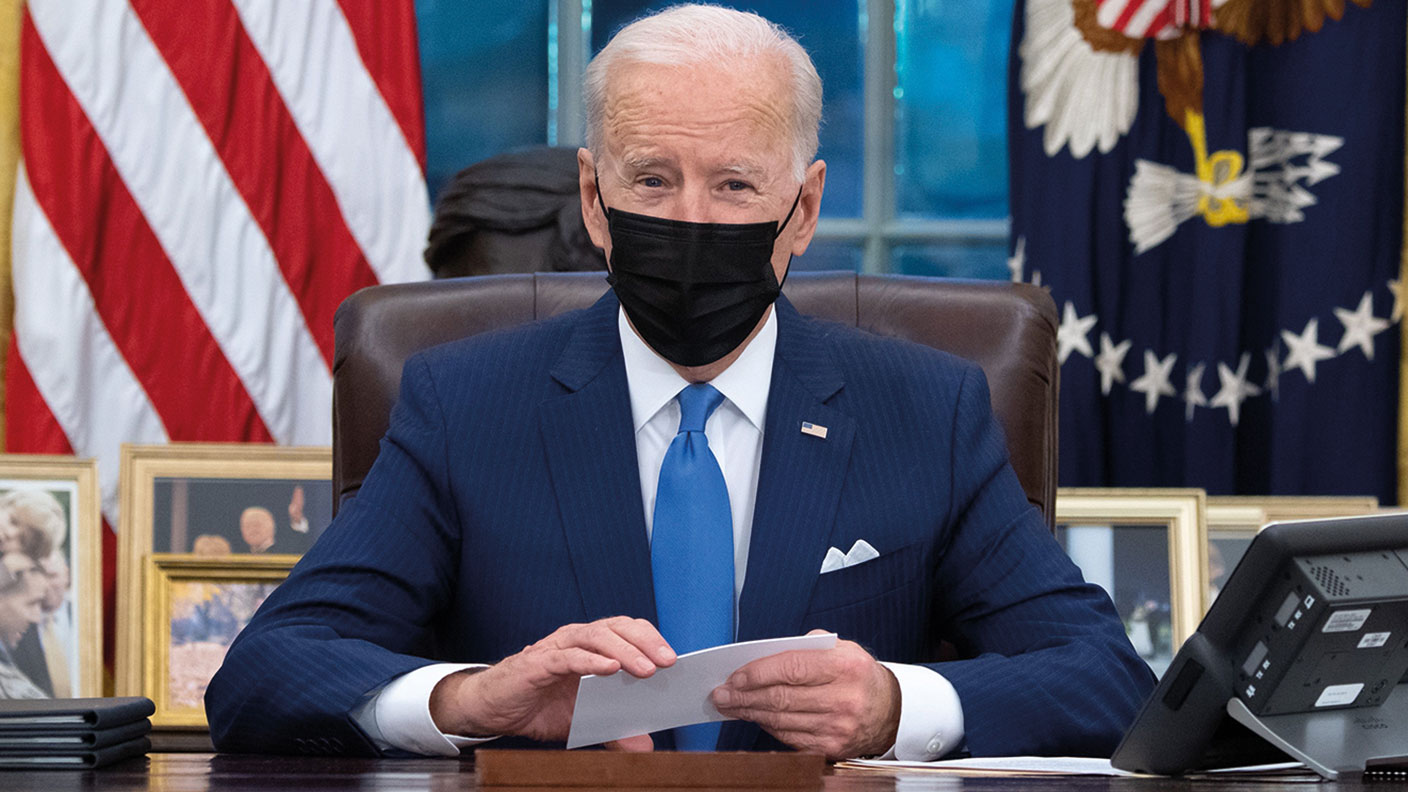The world is drowning in debt
Covid-19 cost world governments some $14trn in fiscal support last year, and this year average global public debt will hit 99.5% of GDP.

“To paraphrase Mr Micawber: ‘Annual income $3,420bn, annual expenditure, $6,552bn, result misery!’” says Peter Warburton in the Halkin Letter. The Biden administration’s $1.9trn spending proposal is another milestone in America’s long march away from “fiscal responsibility”.
Average global public debt will hit 99.5% of GDP this year, according to the International Monetary Fund. The pandemic cost world governments some $14trn in fiscal support last year. In advanced economies government deficits averaged more than 13% of GDP in 2020. Average public debt across the rich world will climb from 104.8% in 2019 to 124.9% this year. In the UK, public debt currently stands at £2.11trn and is on course to exceed 100% of GDP.
The government will borrow eight times more this fiscal year than it did in 2019, says Liam Halligan in The Daily Telegraph. Debt doves say that we shouldn’t worry since the government can borrow so cheaply. But low gilt yields are not due to a market judgement that the UK is a good credit risk. Instead, they reflect the fact that “the Bank of England is hoovering up government paper” with printed money. The Bank’s pile has almost doubled since the pandemic began. Before too long it could “own half of the outstanding gilt stock – an astonishing state of affairs”.
MoneyWeek
Subscribe to MoneyWeek today and get your first six magazine issues absolutely FREE

Sign up to Money Morning
Don't miss the latest investment and personal finances news, market analysis, plus money-saving tips with our free twice-daily newsletter
Don't miss the latest investment and personal finances news, market analysis, plus money-saving tips with our free twice-daily newsletter
Biden’s big bazooka
Meanwhile in America, “Sheriff Joe may be going too big”, writes Irwin Stelzer in The Sunday Times. The President remains deeply marked by the long, slow recovery from the financial crisis that he witnessed as Barack Obama’s deputy.
But the pandemic is a very different beast from the Great Recession. House prices plunged by 30% after 2008; today they are up by 13%. Lending froze up in 2008; today America is “awash in cheap credit”. Even some of Biden’s allies are expressing concern, notes Felix Salmon for Axios. Former Treasury secretary Larry Summers is worried that the stimulus plan will overwhelm the economy’s supply capacity, triggering “demand-pull inflation”.
Ballooning deficits will increase the temptation of governments to adopt some form of Modern Monetary Theory (MMT), the notion that the state can pay for spending by simply “monetising the deficit” (ie, printing money). MMT, which teaches that inflation – not borrowing – is the only major constraint on government spending, remains highly controversial but seems to be gaining ground.
As economist and MMT advocate Stephanie Kelton recently noted, whether you think Biden’s stimulus plan is too big or not, “at least we are [focusing on] inflation risk and not talking about running out of money. The terms of the debate have shifted.” Like it or not, we are all going a little bit MMT.
Get the latest financial news, insights and expert analysis from our award-winning MoneyWeek team, to help you understand what really matters when it comes to your finances.
Alex is an investment writer who has been contributing to MoneyWeek since 2015. He has been the magazine’s markets editor since 2019.
Alex has a passion for demystifying the often arcane world of finance for a general readership. While financial media tends to focus compulsively on the latest trend, the best opportunities can lie forgotten elsewhere.
He is especially interested in European equities – where his fluent French helps him to cover the continent’s largest bourse – and emerging markets, where his experience living in Beijing, and conversational Chinese, prove useful.
Hailing from Leeds, he studied Philosophy, Politics and Economics at the University of Oxford. He also holds a Master of Public Health from the University of Manchester.
-
 What are my retirement income options?
What are my retirement income options?We’re all told to save into a pension, but there’s widespread confusion about how to take an income from our savings and investments at retirement, a new study has found. We look at your retirement income options.
-
 UK interest rates: will the Bank of England lower rates?
UK interest rates: will the Bank of England lower rates?The Bank of England’s Monetary Policy Committee’s (MPC) final interest rates meeting of the year takes place tomorrow (18 December) and most experts expect a cut
-
 Renewable energy funds are stuck between a ROC and a hard place
Renewable energy funds are stuck between a ROC and a hard placeRenewable energy funds were hit hard by the government’s subsidy changes, but they have only themselves to blame for their failure to build trust with investors
-
 The war dividend – how to invest in defence stocks as the world arms up
The war dividend – how to invest in defence stocks as the world arms upWestern governments are back on a war footing. Investors should be prepared, too, says Jamie Ward
-
 Did COP30 achieve anything to tackle climate change?
Did COP30 achieve anything to tackle climate change?The COP30 summit was a failure. But the world is going green regardless, says Simon Wilson
-
 Rachel Reeves's punishing rise in business rates will crush the British economy
Rachel Reeves's punishing rise in business rates will crush the British economyOpinion By piling more and more stealth taxes onto businesses, the government is repeating exactly the same mistake of its first Budget, says Matthew Lynn
-
 Leading European companies offer long-term growth prospects
Leading European companies offer long-term growth prospectsOpinion Alexander Darwall, lead portfolio manager, European Opportunities Trust, picks three European companies where he'd put his money
-
 How to capitalise on the pessimism around Britain's stock market
How to capitalise on the pessimism around Britain's stock marketOpinion There was little in the Budget to prop up Britain's stock market, but opportunities are hiding in plain sight. Investors should take advantage while they can
-
 London claims victory in the Brexit wars
London claims victory in the Brexit warsOpinion JPMorgan Chase's decision to build a new headquarters in London is a huge vote of confidence and a sign that the City will remain Europe's key financial hub
-
 The consequences of the Autumn Budget – and what it means for the UK economy
The consequences of the Autumn Budget – and what it means for the UK economyOpinion A directionless and floundering government has ducked the hard choices at the Autumn Budget, says Simon Wilson